Journey to Mars - An Introduction to the Space Launch System
Humanity has and will always be curious about Mars long since even before we landed on the Moon. The Red Planet, our planetary neighbor has been the subject of so many works of sci-fi and has brought about fantasies of adventure and exploration. Presently, with years of dedication, investigation, and scientific discoveries, we're finally ready to do it: humans are going to Mars. But how?
Currently, there are two rocket launch systems that could be powerful enough to achieve the goal of reaching mars at reasonable time and speed:
- NASA Space Launch System (SLS) and
- SpaceX Falcon Heavy
Now in this post, I will be writing about the NASA Space Launch System (SLS), so to start with, I will be telling you what the SLS is so stay with me.
NASA Space Launch System (SLS)
NASA's Space Launch System, or SLS, is an advanced rocket launch vehicle that provides the groundwork for human exploration beyond the Earth's orbit. With its enormous power and capabilities from its powerful engines, the SLS will launch crews of up to four astronauts in NASA's Orion spacecraft on missions to explore multiple deep-space destinations.
The SLS Offers more payload mass volume capability and the power to hasten missions through space than any currently available launch vehicle, SLS is designed to be adjustable and evolvable and will give way to new opportunities for payloads, including robotic scientific missions to places like Mars, Saturn, and Jupiter.
In order to meet the demands of future deep-space missions, the SLS is designed to keep evolving into increasingly more powerful configurations. The first SLS vehicle, called Block-1, has a minimum 69853-kilogram lift capability, which is powered by two five segments solid rocket boosters and four RS-25 liquid propellant engines, and a redesigned version of an existing upper stage.
The next transformation process of the SLS, Block-1B, will be using the latest, Exploration Upper Stage [EUS] to deliver a 105000-kilogram lift capacity and allow more challenging missions. In the next modification Block-2, the current five-stage boosters would be replaced with two advanced solid or liquid propellant booster engines to provide a 130000-kilogram lift capacity. Each new configuration will continue to allow the SLS use the same core stage design with four RS-25 engines.
CAPABILITIES AND MISSIONS
The Block-1 will produce 3.9 million Newtons of thrust at liftoff, more than 160,000 Corvette engines and the configuration of the SLS will stand 98 meters tall, higher than the Statue of Liberty, and will weigh 25.6 million Newtons fueled. The Block-1 structure will add 15 % more thrust at launch than the Saturn V rocket and will take more than times three the mass of the space shuttle. Using the Block-1 configuration, the first SLS mission Exploration Mission-1 (EM-1) — an unmanned Orion spacecraft to a beyond the bring it back to test the integrated system performance of the SLS rocket and Orion spacecraft and also support teams prior to a manned flight. The second SLS mission, Exploration Mission-2, will launch Orion with a crew of up to four astronauts
on a second mission to the vicinity of the moon, farther into space than humans have ever ventured. The Block-1B manned configuration will be about 111m tall, which is taller than the Saturn V rocket. The Block-1B vehicle will be used for more ambitious mission launches to space near and beyond the moon, where NASA will test systems that will be needed for the journey to Mars. Using the Exploration Upper Stage, the Block-1B vehicle can lift the Orion crew vehicle along with exploration systems like a small deep-space habitat module in a single launch. The next evolution configuration, called Block-2, will be the vehicle for having a human mission to Mars. The Block-2 will provide 4.1 million-kilograms of thrust at liftoff and will weigh 2.9 million-kilogramBUILDING THE ROCKET
CORE STAGE
The SLS core stage is being developed by Boeing Company, headquartered in Chicago, including the avionics that will control the vehicle during flight. With an estimated height of more than 67m tall and diameter of 8.41m, the core stage will store 2,763,350.6 liters of super-cooled liquid hydrogen and liquid oxygen that will fuel the RS-25 engines for the SLS.
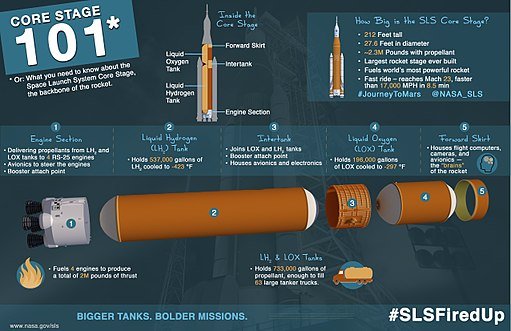
The core stage is being built at NASA's Michoud Assembly Facility in New Orleans using state-of-the-art manufacturing equipment, including a FRICTION-STIR-WELDING tool that is the largest of its kind in the world. Also, the rocket's avionics operating system is being developed at NASA's Marshall Space Flight Center in Huntsville, Alabama.
RS-25 ENGINES
The Propulsion System for the SLS core stage will be provided by four RS-25 engines. Aerojet Rocketdyne, California, An inventory of 16 RS-25 shuttle engines is being upgraded to SLS performance needs, including a nozzle insulation, a new engine control, and required operation at 1,859,356.63 Newtons of thrust instead of 1,757,047.53 Newtons normally used for the shuttle.
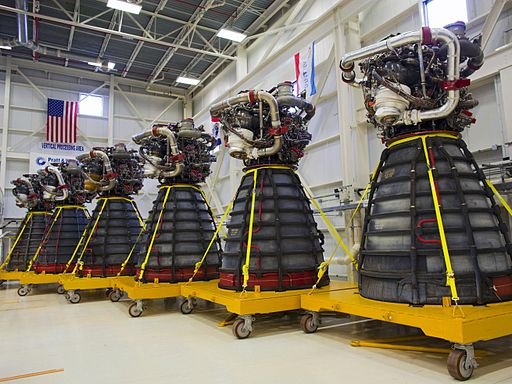
BOOSTERS
Two shuttle-derived solid rocket boosters will be used for the initial flights of the SLS. Each one provides 16 million Newton of thrust. To supply the additional power needed for the rocket, the solid rocket boosters are modified from the shuttle's configuration using four propellant segments to a five-segment type by the prime contractor for the booster Orbital ATK, headquarters in Dulles, Virginia. This new design will also include case insulation, new avionics, and propellant design. Orbital ATK has successfully finished a full-course booster qualification ground test, and a second qualification test firing in 2016.
Thanks for your time, in my next post i will be writing about SpaceX Falcon Heavy Rocket. Hoping to see you soon.
Do not forget to comment, upvote and follow.
If you write STEM (Science, Technology, Engineering, and Mathematics) related posts, consider joining #steemSTEM on steemit chat or discord here. If you are from Nigeria, you may want to include the #stemng tag in your post. You can visit this blog by @stemng for more details.

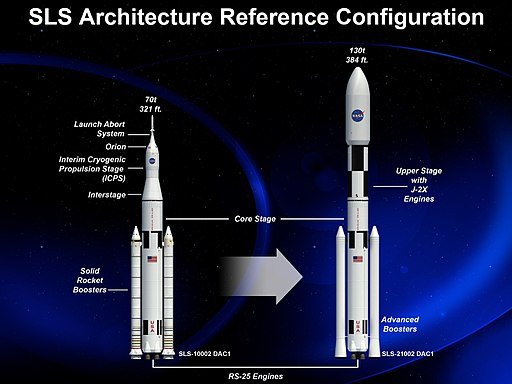
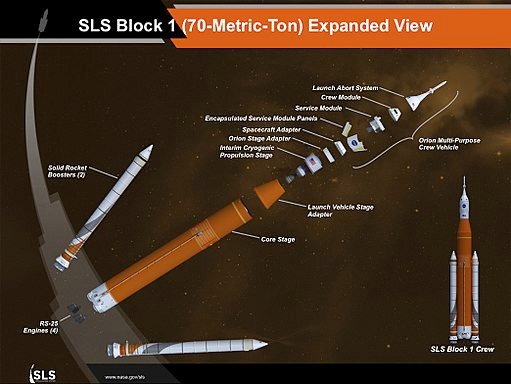
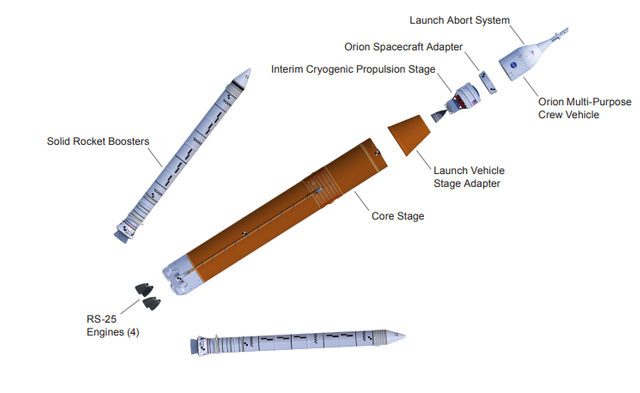
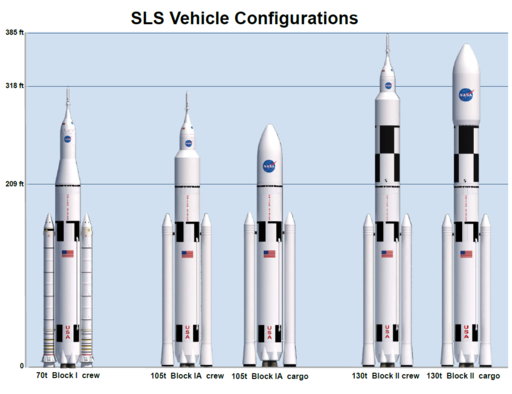
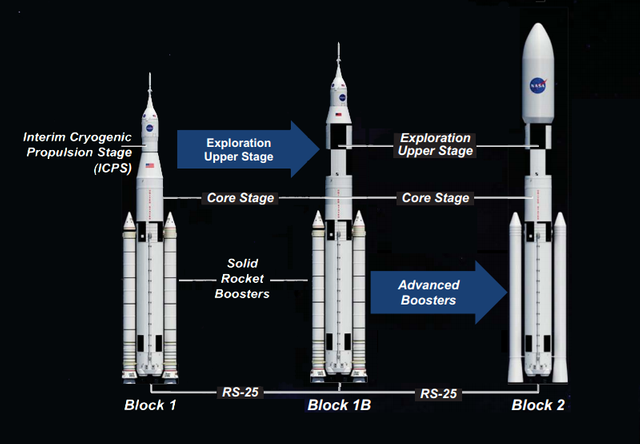
Hi, I found some acronyms/abbreviations in this post. This is how they expand:
Upgrading to SLS performance is crucial for enabling SLS missions to deep space as the rocket evolves to be larger and carry astronauts and heavy cargo on a single flight.
I should save up for a vacation in Mars, how much do you think it will cost me?
$10 billion dollars and you are good to go my friend 😁
hello @akinwonmi, very informative post about the vehicles that take man to space. A lot of us love the space missions but are ignorant of the technology behind the engines that make it possible.
cheers!
I'm glad you found the post very useful.
Don't miss my next post as i will be writing about another space vehicle technology.
Cheers
It's an interesting topic, hopefully one day humans can conduct operations on it's surface.
One thing though dude, please when you write don't copy it almost directly from nasa. The steemstem community is an honest community, if you would like to be recognised you should write things in your own words.
Keep at it, see you around.
Thanks for the advice. I'll take note and be more careful next time.
😭 ★★good post!!!; 😭